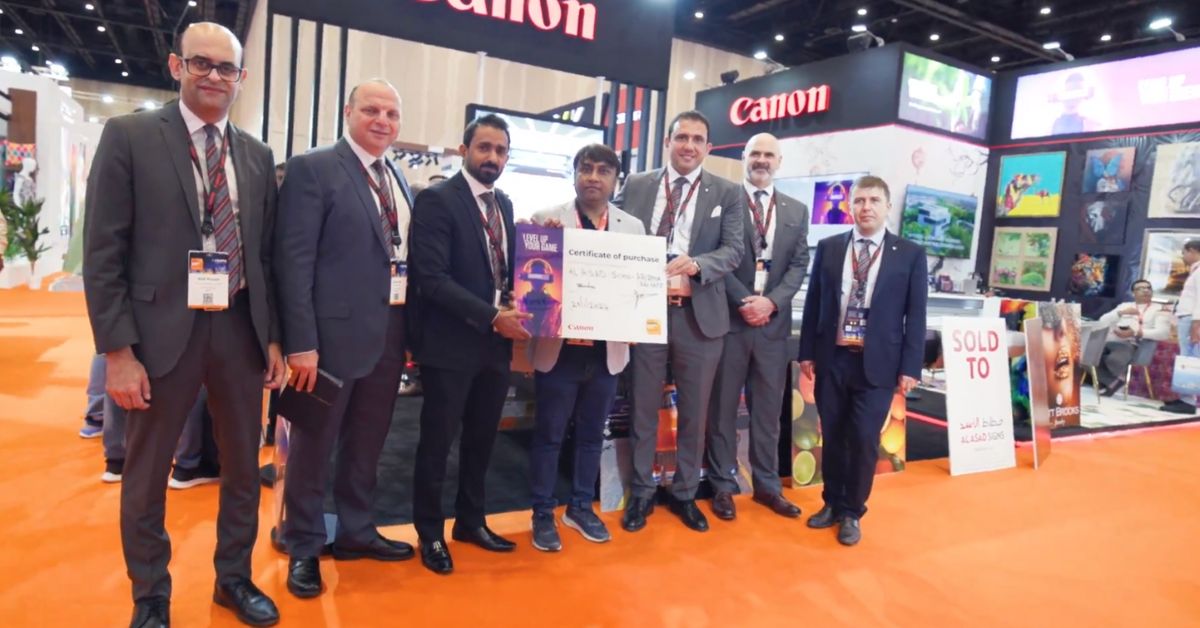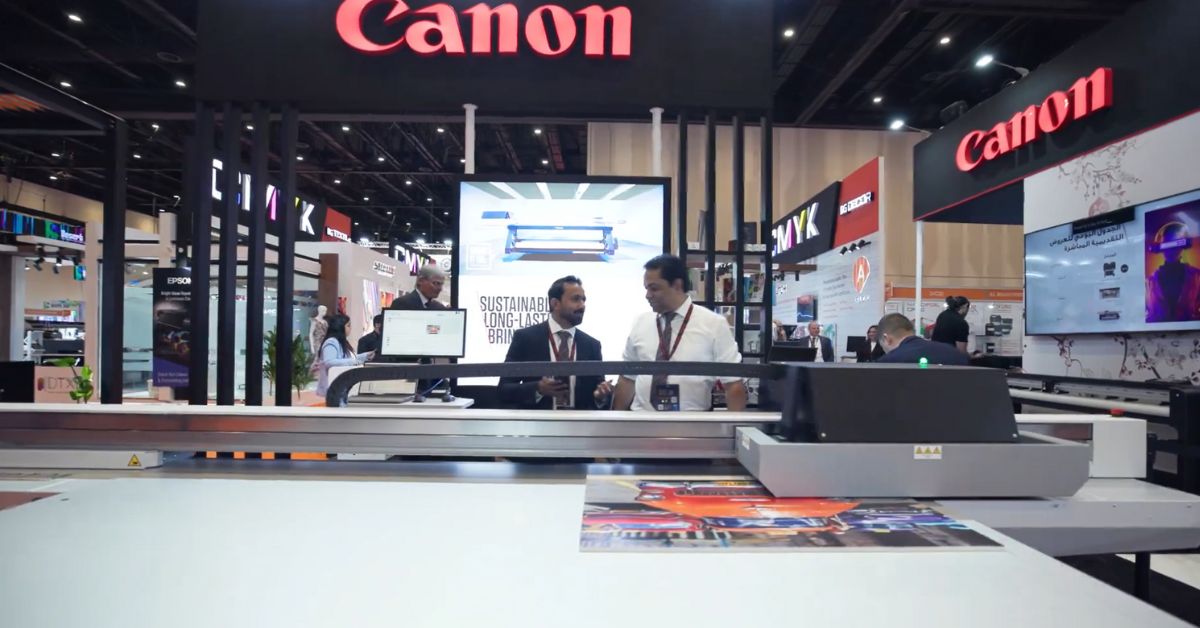DUBAI — Following Canon’s Annual Partner Conference, TRENDS secured a detailed interview with Venkatasubramanian (Subbu) Hariharan, Managing Director for Canon Middle East & Turkey, revealing robust growth projections for the region.
Hariharan highlighted the significant role of emerging technologies and Canon’s strategic focus on innovation, sustainability, and skills development within the imaging and printing sectors.
Emphasizing the “Rethink, Revive, Reach” strategy, he discussed Canon’s commitment to leading industry evolution through advanced imaging in AR, VR, and video analytics, along with AI-driven enhancements in customer service.
Q: What industry trends do you believe are driving growth for Canon in the Middle East and Turkey?
A: The imaging and printing industry’s evolving market dynamics are particularly intriguing. Augmented Reality (AR), Virtual Reality (VR), and video analytics are becoming increasingly central to digital experiences. Canon is adapting by focusing on innovation, integrating AI-driven features, deep learning, and machine learning to meet changing customer needs.

Imaging plays a crucial role across various applications, including high-resolution photo and video capture, live streaming, production, broadcast, and security & surveillance. Our aim is to continually align with emerging technologies to enhance digital experiences.
Q: Can you share insights into the printing sector’s growth prospects within the region?
A: Our recent study, “State of the Middle East Print Industry,” highlighted wide-format printing and book printing as significant growth areas. Seventy-five percent of regional printers anticipate growth in wide-format graphics, while 66 percent see opportunities in book printing, and 40 percent in commercial printing.
Our Colorado M large-format printer for graphic arts, launched in March, has seen increasing orders. Moreover, despite market fluctuations, the interchangeable lens camera segment remains robust. Innovative product launches continue to drive this sector, positioning the market to slightly exceed last year’s performance.
Q: How does Canon’s ‘Rethink, Revive, Reach’ approach resonate with the broader industry trends you’re witnessing?
A: Canon’s “Rethink, Revive, Reach” strategy aligns with the “New Customers, New World” vision, responding to the dynamic industry landscape. This approach emphasizes adaptation, evolution, and the revitalization of strategies to engage emerging customer segments. It leverages our leadership and workforce agility to reassess and expand our reach, addressing diverse needs.
Q: How does Canon manifest its commitment to innovation?
A: Canon’s dedication to innovation is unwavering, with over 8 percent of our global sales reinvested into research and development annually. In 2023, we introduced several groundbreaking technologies and products that incorporate AI, such as the Neural Network Upscaling Technology, which preserves original photo resolution during enlargement; the EOS R3 Mirrorless Camera, known for its exceptional speed and autofocus; and advancements in MRI technology to enhance image quality and reduce exam durations. Our LabelStream LS2000, a new inkjet label press, represents our foray into industrial-scale, water-based printing technology, reflecting our innovation drive.

Q: Can you elaborate on the importance of skillset development in fostering innovation and reinforcing brand purpose?
A: Investing in talent development is fundamental to Canon’s ethos of KYOSEI, which signifies our commitment to communal well-being. We prioritize enhancing the skills and mindsets of our employees, partners, and the community to align with our core values and brand identity. This commitment is evident in our efforts to nurture future-ready talent through internships and promoting gender diversity within the workforce.
Our focus on skill development complements our sustainability initiatives, ensuring our contributions benefit both our customers and society at large. This holistic approach to innovation, skill development, and sustainability underscores our dedication to making a positive, lasting impact.
Seventy-five percent of regional printers anticipate growth in wide-format graphics… positioning the market to slightly exceed last year’s performance.
Subbu Hariharan, Managing Director, Canon Middle East & Turkey
Q: How significant is sustainability within the broader scope of the imaging and printing industry?
A: Sustainability is paramount for Canon, reflecting a broader industry trend where demand for eco-friendly products and transparent initiatives is rising. Customers are increasingly seeking solutions that reduce environmental impact, prompting companies across the imaging and printing industry to adapt their strategies accordingly.
Canon aims to empower future generations with sustainable imaging and printing solutions while minimizing environmental footprints. We are committed to cutting lifecycle CO2 emissions per product by 50 percent by 2030, aligning with the Paris Agreement goals.
So far, we’ve achieved a cumulative 43 percent reduction since 2008, surpassing our annual target with an average decrease of 4.1 percent against a 3 percent goal. Our CO2 emission reduction efforts have been validated by the Science Based Targets initiative (SBTi) in accordance with the 1.5°C Paris Agreement target.
Q: With emerging trends highlighted during the conference, how do you see these influencing the imaging and printing industry among businesses and consumers?
A: The post-pandemic landscape has unveiled a new wave of consumer segments, including casual content creators, gamers, young storytellers, and hybrid home enthusiasts, among others. These groups signal a significant shift in the industry, necessitating adaptations to meet their diverse needs.
In the business realm, there’s a noticeable shift towards Managed Print Services equipped with security features and sustainability considerations. The creative and industrial printing sectors are also expanding, reflecting a keen interest in streamlined work processes.
Addressing these trends requires a focus on enhancing user experience, bolstering security, and implementing sustainable practices. Such adaptations are crucial for the future of the imaging and printing industry, ensuring it remains responsive to both consumer and business needs.

Q: What do you foresee as the next big developments in the industry?
A: The industry is poised to continue its path toward sustainability, innovation, and enhanced security. The adoption of cutting-edge technology to cater to the digital landscape’s evolving demands, while ensuring sustainable practices, will be crucial. Collaborative efforts among industry stakeholders and technological advancements aimed at bolstering security in printing solutions are expected to dictate the industry’s future direction.
The focus on meeting consumer needs, while adhering to environmentally conscious practices and providing secure printing solutions, will persist.
Sustainability is paramount for Canon… We are committed to cutting lifecycle CO2 emissions per product by 50 percent by 2030.
Subbu Hariharan, Managing Director, Canon Middle East & Turkey
The shift towards hybrid work models has intensified the need for secure and cloud-based solutions. In response, our B2B sector has seen an increase in multifunction devices, service offerings, and consumables, particularly as businesses embrace hybrid work models.
We’ve played a key role in advising clients on hybrid work best practices, equipping them for a future workplace that is more flexible, secure, and mobile. Additionally, the demand for inkjet printers has grown with the rise of remote work, while the preference for mirrorless cameras highlights the technological advancements influencing consumer choices.
The post-pandemic era has also seen a boom in content creation. As an imaging leader, we’re deeply involved with and innovating for this expanding community. Our goal is to fully understand and meet content creators’ needs, developing features that enhance their creative processes. This collaborative effort ensures our continued leadership, providing cutting-edge solutions to the ever-evolving content creation community.
